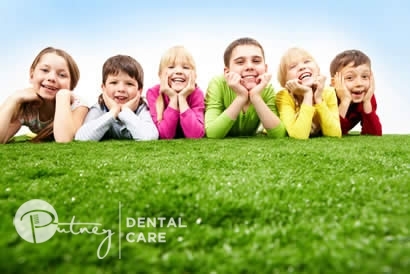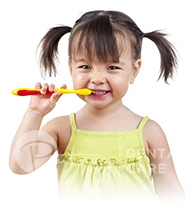
Parent's Guide to Toddler Teething
As a parent, it’s never easy to watch your toddler experience discomfort when they’re teething. However, it is a natural process in babies and toddlers, so there’s no need to feel distressed if your child is in pain.
In this guide, we answer all your questions regarding teething, including the signs and symptoms to watch out for, as well as easy treatments to relieve pain.

What is Teething?
Teething is when your child’s baby teeth start to emerge from their tender gums. The process typically results in them experiencing discomfort as the teeth can cut when erupting through the gums.
How Long Does it Take for Baby Teeth to Grow?
Baby teeth start to appear in most children within their first year, commonly at around 6 months. By the time your child is 3 years old, they may have already developed all 20 baby teeth.
Baby teeth tend to arrive in groups at different ages. So here’s a general timeline that your teething toddler may be following:
- At 6-15 months, you can expect your child’s central incisors to erupt. Furthermore, at around 10 months, you may see their upper and lower lateral incisors appear.
- At 16-23 months, the canine incisors emerge, along with their first molars. These molars are positioned next to the canine incisors.
- At 22-33 months, the second molars typically arrive. These are located at the back of the mouth, next to the first year molars. The second year molars are the last teeth to arrive in your child before their adult teeth come through at the age of 6.
If your toddler isn’t following this timeline, there’s no need to worry! Baby teeth grow at different rates for each child.
Teething Symptoms and Signs
Teething discomfort varies for many toddlers. For example, it is not uncommon that children experience more pain during the eruption of their first incisors than the first and second year molars. As a result, toddler teething is unpredictable, making it hard for parents to prepare.
Some general indictions that your child may be teething include:
- Change in moods, such as restlessness, crankiness or irritability
- Disrupted sleep
- Sensitive and swollen gums
- Ear pulling
- Cheek rubbing or flushed cheeks
- Chewing
- Excessive drooling and extra saliva
- Fist or thumb sucking
- Reduced appetite
- Slight rise in temperature (no higher than 38 degrees)
Does teething cause fever, diarrhoea, rashes or colds?
People claim that teething causes fever, diarrhoea, rashes and colds. However, academic research institutions and peer-reviewed studies confirm that these are not symptoms. If your child is suffering from these symptoms, we recommend seeing a doctor as soon as possible.
How to Relieve Teething Pain
Fortunately, every parent has experienced the stress of managing their toddler’s teething pain. As a result, various treatment methods have been established and proved effective across multiple children at different teething stages.
If your child’s teeth are coming through and they are experiencing discomfort, try these accessible and safe remedies.
Soft and Cold Food/Drink
Teething toddlers commonly experience pain when they are chewing, causing a loss of appetite or excessive drooling. You can accommodate this pain by serving your child soft and cold food or drink.
Soft foods that are easier to swallow without chewing can help your child maintain a healthy diet while teething. Furthermore, colder foods and drinks are efficient in soothing sore gums.
Beneficial food and beverages for your toddler include:
- Smoothies
- Mashed fruits or veggies (e.g. potatoes or bananas)
- Frozen fruits
- Pureed meat
- Soups
- Plain yoghurt
- Ice water
Teething Rusk
Rusks are also an effective treatment in soothing your child’s teething pain. Rusks are a type of bread or biscuit that are can easily be made at home. The rusk is traditionally baked till rock hard, allowing your child to chew and bite on it without cracking.
A sugar free rusk is an excellent alternative to teething rings, as they are made with organic ingredients such as milk and wheat. As always, it’s important to watch your child when they are chewing down on the rusk to ensure they don’t choke.
Teething Toys
Teething toys are a safe treatment that also helps soothes your toddler’s gums through chewing. However, an essential consideration with teething toys is to keep an eye out for mould. Mould thrives in damp environments, making teething toys a favourable surface. So before giving a teething toy to your child, be sure to inspect it and always wash it after use.
Types of teething toys include:
- Teething ring
- Teething toothbrush
- Teething Blanket (these softer alternatives are great for children who are experiencing pain when chewing on hard surfaces)
Massage
Massaging is another helpful home remedy to alleviate your child’s teething pain. The best method is to soak your fingers in chilled water and gently massage the affected area. The pressure from rubbing helps decrease pain while also reducing gum swelling.
Always ensure to wash and disinfect your hands before massaging to avoid infection. This treatment is beneficial if your child’s baby teeth are yet to erupt. If your toddler’s teeth have erupted, be careful, as they are likely to bite you!
Medications
If your child is still experiencing significant pain despite these home remedies, you can try administering medication. The best practice is to always see your paediatrician for the most suitable pain medication and correct dosage.
What to Avoid when Relieving Teething Pain
Children should always avoid benzocaine containing products such as topical teething gels or liquids. Benzocaine is a local anaesthetic that can be found in over-the-counter teething medications. Benzocaine has been linked to a rare condition known as methemoglobinemia in children. The condition is deadly and reduces oxygen levels in children’s bloodstreams.
The Therapeutic Government Association (TGA) states that benzocaine should not be administered to children under 2.
Furthermore, teething necklaces that contain amber, wood, silicone or marble also pose a choking hazard and can strangle your child.
Other treatments like homeopathic teething tablets, gels or liquids, also threaten your child as they contain dangerous active ingredients. Homeopathic medicines have been historically linked to child deaths, and the TGA advises that no parent should give Hyland’s products to their kids.
Caring for Your Child and their Teeth
Even before your child’s teeth start to erupt, you should take precautions in caring for their gums. If you suspect that your child is teething, wipe their gums with a damp and cool cloth to help soothe the discomfort.
When your child’s teeth do erupt, there are various recommendations to help your child develop healthy brushing habits to protect their dental health and avoid degenerative diseases such as pulpitis or tooth decay.

Brushing your Toddler’s Teeth
If your teething baby is under 18 months, the Australian Dental Association recommends not using toothpaste when cleaning the erupted incisors. Instead, wrap your clean finger with a wet cloth and wipe your baby’s gums and teeth in circular motions twice a day.
Once older than 18 months, use a soft bristled toothbrush and a pea sized amount of low fluoride toothpaste to brush twice a day alongside consistent flossing to promote healthy teeth.
Dummies and Teething Toddlers
While toddlers tend to continue using their dummies through the teething process, the NSW government recommends that the habit should be dropped by the time they reach 4-5 years. This is because dummies can host a range of bacteria and germs that lead to dental decay.
If your toddler still likes using a dummy, you should regularly disinfect and clean it. Try avoiding dipping your toddler’s dummy in sweet liquids like jam or honey, and never share it with other children.
Bruxism
Bruxism is the term used to describe teeth grinding. There’s no need to worry if you hear your child grinding their teeth while sleeping. The condition is common among toddlers due to their misaligned sets of teeth, and they grow out of the habit by the time their permanent teeth arrive.
However, excessive teeth grinding can cause headaches or jaw aches. If you’re worried about bruxism in your toddler, book an appointment with our paediatric dental team for a consultation.
When to Consult a Dentist
The best practice is to book your child’s first dental appointment within 6 months of their first tooth erupting. However, if your child is experiencing extended or significant discomfort, book an early consultation with a paediatric dentist to ensure that the erupting teeth are coming in correctly.
Similarly, if your toddler is experiencing a persistent high fever or diarrhoea, we recommend seeing a paediatrician as there may be an underlying medical condition, such as an ear infection.
Putney Dental Care offers specialised services for your toddler’s teeth. Contact our paediatric dental team today if you have any concerns about your child’s new teeth or want to book them into their first dental visit.
FAQs
Are molars more painful than incisors for teething toddlers?
No. A common misconception is that first year and second year molars cause more teething discomfort than incisors. Despite the molars being larger in their square shape, this is false. Generally, toddlers present similar symptoms to their first set of baby teeth that come in.
Is it normal for my two year old to be teething?
Yes. At around this age, your toddler will develop their two year molars, which is their last set of baby teeth to erupt.
How long does it take for two year molars to come in?
Every child is different when it comes to teething. However, generally the two year molars will erupt between 23 and 33 months. Usually the lower set comes in first.
What do teething gums look like?
Teething gums tend to be swollen and tender. You may also notice white spots in your baby’s gums, which is entirely normal.
Children's Dentist Near Me
Address
A. Suite 5, 227 Morrison Rd, Putney, NSW 2112
(Next Door To Royal Rehab)
Reserved Parking Available At Rear.
Opening Hours
Monday – 8:30 am – 5:30 pm
Tuesday – 8:30 am – 5:30 pm
Wednesday – 8:30 am – 5:30 pm
Thursday – 8:30 am – 5:30 pm
Friday – 8:30 am – 5:30 pm
Saturday – 8:00 am – 1:00 pm
Emergency Appointments Available
Call us today on (02) 9808 2588 or book an appointment online.
Book Online